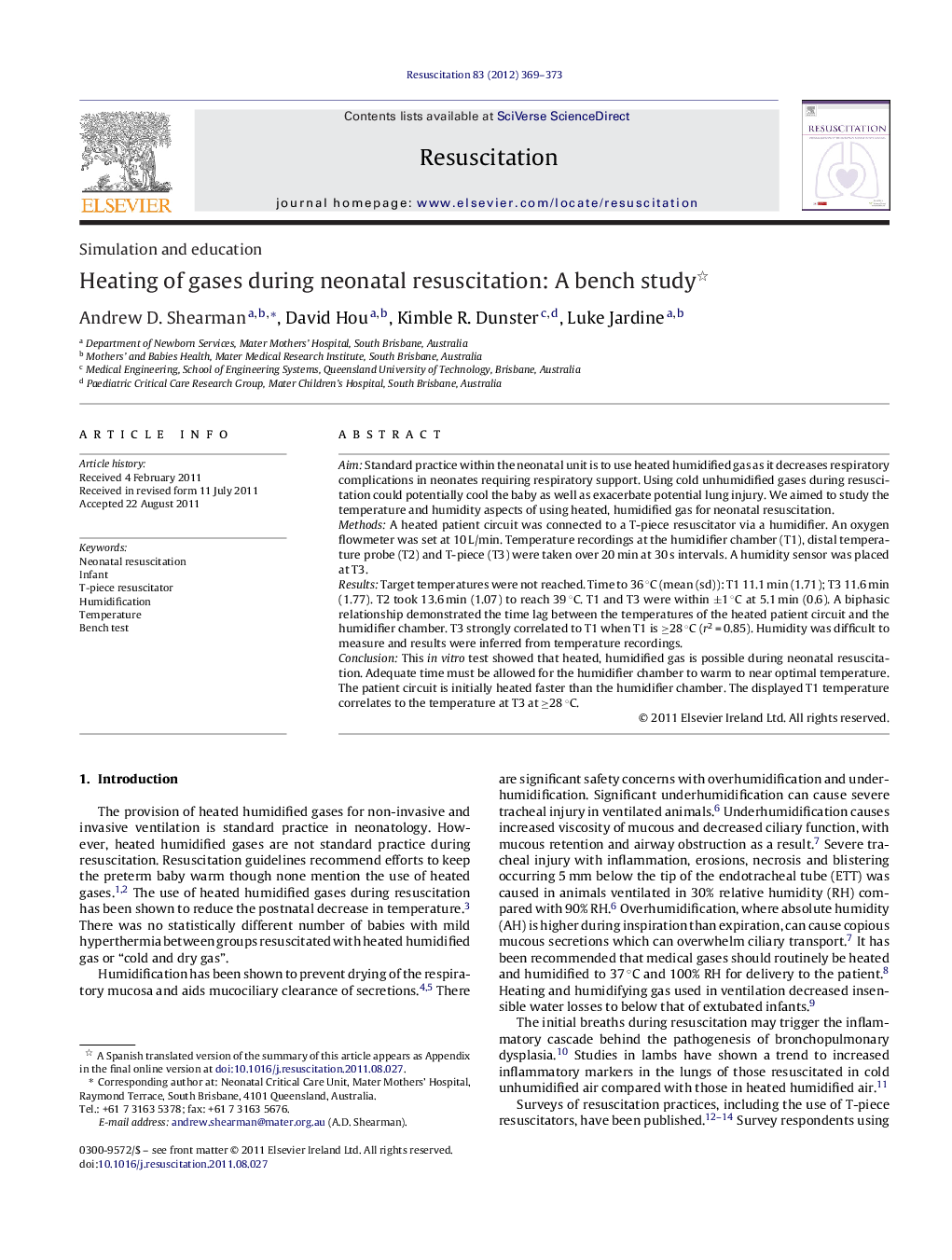| Article ID | Journal | Published Year | Pages | File Type |
|---|---|---|---|---|
| 3008443 | Resuscitation | 2012 | 5 Pages |
AimStandard practice within the neonatal unit is to use heated humidified gas as it decreases respiratory complications in neonates requiring respiratory support. Using cold unhumidified gases during resuscitation could potentially cool the baby as well as exacerbate potential lung injury. We aimed to study the temperature and humidity aspects of using heated, humidified gas for neonatal resuscitation.MethodsA heated patient circuit was connected to a T-piece resuscitator via a humidifier. An oxygen flowmeter was set at 10 L/min. Temperature recordings at the humidifier chamber (T1), distal temperature probe (T2) and T-piece (T3) were taken over 20 min at 30 s intervals. A humidity sensor was placed at T3.ResultsTarget temperatures were not reached. Time to 36 °C (mean (sd)): T1 11.1 min (1.71); T3 11.6 min (1.77). T2 took 13.6 min (1.07) to reach 39 °C. T1 and T3 were within ±1 °C at 5.1 min (0.6). A biphasic relationship demonstrated the time lag between the temperatures of the heated patient circuit and the humidifier chamber. T3 strongly correlated to T1 when T1 is ≥28 °C (r2 = 0.85). Humidity was difficult to measure and results were inferred from temperature recordings.ConclusionThis in vitro test showed that heated, humidified gas is possible during neonatal resuscitation. Adequate time must be allowed for the humidifier chamber to warm to near optimal temperature. The patient circuit is initially heated faster than the humidifier chamber. The displayed T1 temperature correlates to the temperature at T3 at ≥28 °C.
